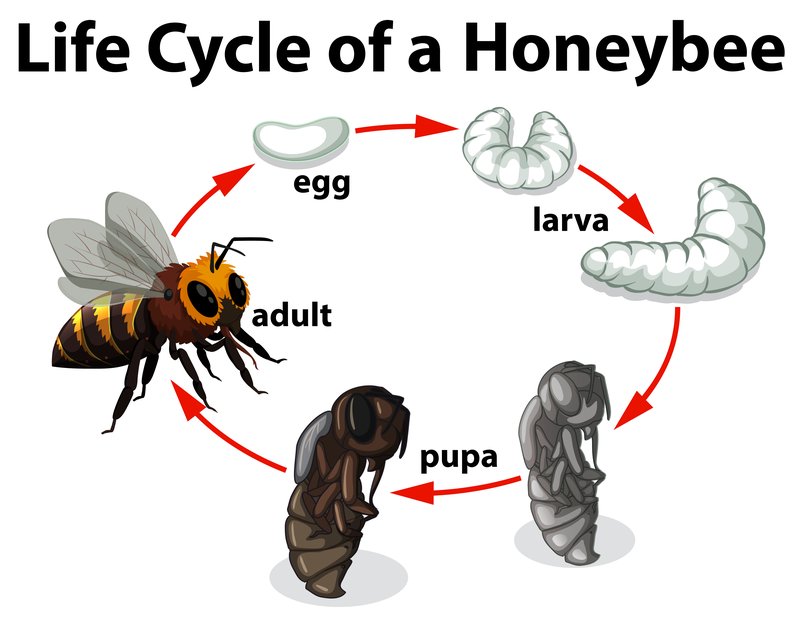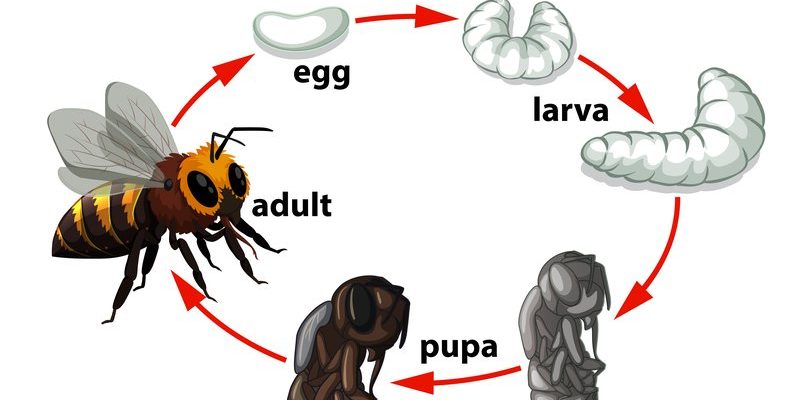
The lifecycle of a carpenter bee is like a well-planned construction project, complete with stages of development that turn a simple egg into a skilled pollinator. Understanding this lifecycle offers a peek into their world, helping you appreciate the vital role they play in nature. In this article, we’ll explore each stage of a carpenter bee’s life, from the moment it hatches to its time as an adult buzzing around your backyard.
What are Carpenter Bees?
Carpenter bees are large, stout bees that are often mistaken for bumblebees. They have shiny, hairless abdomens while bumblebees are fuzzy all over. These bees play a critical role in pollination, helping plants reproduce by transferring pollen from flower to flower. While they might not produce honey like honeybees, their impact on our ecosystem is significant.
You might be wondering why they’re called “carpenter” bees. Well, it’s because they don’t just live in flowers. They carve out their nests in wood, making them quite the little carpenters! This behavior can be a problem for homeowners, as they sometimes choose to burrow into wooden structures, causing damage. However, it’s important to remember that they’re generally harmless and crucial for pollination.
The Egg Stage: Tiny Beginnings
Carpenter bee eggs are tiny and nestled inside the wooden nests that the female bee creates. After mating in the spring, the female gets busy laying her eggs. She digs tunnels into soft, untreated wood, such as cedar or pine, and creates separate chambers for each egg. This stage is crucial because the environment inside the nest must be just right for the eggs to thrive.
Once the eggs are laid, the female bee seals off each chamber with a mix of pollen and nectar. This provides the larvae with food once they hatch. It’s similar to packing a lunchbox before a long trip—you want to make sure you have everything you need for the journey ahead. The warmth and moisture inside the wood help keep the eggs safe from predators and the elements, ensuring they’re ready to hatch a few weeks later.
Larval Stage: Growing Up
Once the eggs hatch, the larvae begin their journey. This stage is all about growth and development. The larvae are small, soft, and white, relying on the food stored in their chambers to grow. They munch away on the pollen and nectar mixture, gaining strength for their transformation ahead. This part of their life is kind of like being a kid in a growth spurt—eating a lot and getting ready for the next big step.
Interestingly, carpenter bee larvae undergo several molts as they grow. Each time they molt, they shed their old skin, which allows them to increase in size. This process continues until they’re ready to pupate. It’s a delicate time, much like navigating the tricky teen years, where they have to be cautious and avoid any dangers lurking outside.
Pupal Stage: Transforming into Adults
The pupal stage is where the real magic happens. After about a month of feeding, the larva forms a cocoon around itself within its chamber. Here’s where transformation kicks in—this stage is akin to turning into a butterfly, but for carpenter bees, it’s about becoming a fully developed adult bee.
During pupation, the larva undergoes significant changes, developing wings, legs, and the characteristic body structure of an adult bee. It’s an amazing process, and it happens without any fanfare, tucked away safely inside the wooden nest. This stage can take several weeks, depending on environmental conditions like temperature and humidity. Just like waiting for a cake to bake, patience is critical!
Emerging as Adults: The Buzz Begins
After completing the pupal stage, the newly transformed adult bee emerges from its nest. This is their grand debut! Adult carpenter bees tend to stay in their nests for a while before taking flight, as they acclimate to their new environment. They clean themselves, flex their wings, and prepare for the responsibilities that lie ahead.
Once ready, these bees start the cycle all over again—mating, laying eggs, and creating new nests. It’s a continual process that contributes greatly to our ecosystem. Adult carpenter bees play a vital role in pollination, helping crops and flowers bloom and thrive. Watching them zip around your garden, you might even catch a glimpse of that industrious spirit in action.
The Importance of Carpenter Bees
Carpenter bees may not be as famous as their honey-producing cousins, but they serve essential roles in our ecosystem. They’re particularly good at pollinating certain types of flowers, including many fruit and vegetable plants. This makes them valuable allies for gardeners and farmers alike.
Interestingly, their nesting habits can actually benefit wood by helping break it down, which allows for new growth in the ecosystem. While they can cause damage to wooden structures, it’s important to look at the bigger picture. By understanding their lifecycle and role in pollination, we can learn to appreciate these little architects in a new light.
Protecting Carpenter Bees in Your Garden
If you’re a gardener, you might want to attract carpenter bees to your yard. They’re great for pollination! Planting native flowers that carpenter bees love can help invite them into your space. Think of easy-to-grow options like sunflowers, black-eyed Susans, and lavender. These plants not only benefit your garden but also provide a source of food for these busy bees.
On the flip side, if you have wooden structures where they’re causing damage, consider using natural repellents. You can discourage them by applying a non-toxic sealant to protect your wood or by introducing alternative habitats, like bee hotels, that can redirect their nesting instincts. Remember, patience is key. Understanding their lifecycle and behaviors can help you live harmoniously with these intriguing pollinators.
In closing, the lifecycle of a carpenter bee—from egg to adult—is a remarkable journey filled with transformation and purpose. By appreciating their place in nature, we can all play a part in protecting these unique and vital creatures. So, the next time you see a carpenter bee buzzing around, take a moment to recognize the incredible lifecycle that brought it there.

